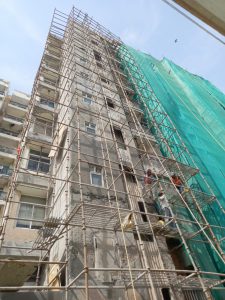Planning Structural Repairs: A Comprehensive Guide
In the lifecycle of any building, wear and tear are inevitable
From minor cracks to major structural issues, every building requires repair at some point. Planning these repairs is crucial to ensure the safety, longevity, and functionality of the structure. In this article, we’ll delve into the intricacies of planning structural repairs, catering specifically to decision makers involved in building maintenance and renovation projects.
Table of Contents
| Sr# | Headings |
| 1 | Understanding the Scope of Repair |
| 2 | Assessing Structural Damage |
| 3 | Legal Considerations for Repair |
| 4 | Choosing the Right Repair Method |
| 5 | Selecting Qualified Contractors |
| 6 | Budgeting for Structural Repairs |
| 7 | Implementing the Repair Plan |
| 8 | Ensuring Quality Control |
| 9 | Post-Repair Maintenance |
| 10 | Future-Proofing the Structure |

1. Understanding the Scope of Repair
Before diving into the planning phase, it’s essential to understand the extent of the repair needed. This involves conducting a thorough inspection of the building, identifying all structural issues, and categorizing them based on severity and urgency.
2. Assessing Structural Damage
Once the scope is defined, a detailed assessment of the structural damage is necessary. This may involve consulting structural engineers, architects, or other experts to evaluate the integrity of the building and determine the root causes of the damage.
3. Legal Considerations for Repair
In many jurisdictions, there are legal requirements and regulations governing structural repairs. Decision makers must be aware of these laws, including specific acts like MHADA Act, and ensure compliance throughout the repair process.
4. Choosing the Right Repair Method
There are various methods for addressing structural issues, ranging from simple patching to complex reinforcement techniques. Selecting the appropriate method depends on factors such as the type of damage, building materials, and budget constraints.
5. Selecting Qualified Contractors
Finding the right contractor is paramount to the success of any repair project. Decision makers should seek reputable firms with experience in structural repairs and ensure they possess the necessary licenses and certifications.
6. Budgeting for Structural Repairs
Creating a realistic budget is crucial for planning structural repairs. This involves estimating costs for materials, labor, permits, and any unforeseen expenses that may arise during the project.
7. Implementing the Repair Plan
Once the planning phase is complete, it’s time to put the repair plan into action. This may involve coordinating with contractors, obtaining permits, and scheduling the work to minimize disruptions to occupants.
8. Ensuring Quality Control
Quality control is essential to ensure that repairs are performed to the highest standards. Decision makers should establish clear guidelines and protocols for inspections, testing, and monitoring throughout the project.
9. Post-Repair Maintenance
Even after repairs are complete, proactive maintenance is necessary to prevent future issues. Decision makers should develop a maintenance plan that includes regular inspections, repairs, and updates as needed.
10. Future-Proofing the Structure
As technology and building practices evolve, decision makers should consider future-proofing measures to protect the structure against potential hazards and ensure its longevity.
Now that we’ve covered the essential aspects of planning structural repairs, let’s address some common questions that decision makers may have:
Frequently Asked Questions (FAQs)
- What are the legal implications of structural repairs? Legal considerations vary depending on the jurisdiction and the nature of the repairs. It’s essential to familiarize yourself with local laws and regulations, including acts like MHADA Act, to ensure compliance.
- How long does it take to complete structural repairs? The duration of a repair project depends on various factors, including the extent of damage, chosen repair method, and availability of materials and labor. Complex repairs may take weeks or even months to complete.
- How can I ensure the quality of structural repairs? Quality control measures, such as hiring qualified contractors, conducting regular inspections, and using high-quality materials, are essential for ensuring the quality of structural repairs.
- What is the cost of structural repairs? The cost of structural repairs can vary widely depending on the extent of damage, chosen repair method, and other factors. It’s advisable to obtain multiple quotes from reputable contractors and budget accordingly.
- Is it possible to prevent structural issues in the future? While it’s impossible to completely eliminate the risk of structural issues, proactive maintenance and regular inspections can help identify potential problems early and prevent them from escalating into major issues.

“Great insights on planning structural repairs! Just like a building needs a strong foundation, in chess too, a player needs a solid base of strategies and techniques. At SMCA Chess Academy, we focus on strengthening fundamentals through online chess training so that learners can build lasting skills for success. 🏆♟️ http://www.smca64.com
“